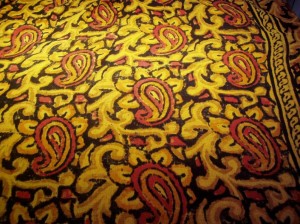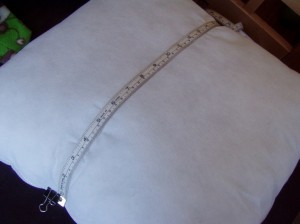 Sometimes, it’s actually quite overwhelming to try to get your arms around what you are actually going to do. Of course, the simplest thing to do is to just go out and buy pillows or pillow covers, but perhaps you can’t find anything that is either in the budget or that you like or that fits the decor/colors and so on. So. (more…)
Sometimes, it’s actually quite overwhelming to try to get your arms around what you are actually going to do. Of course, the simplest thing to do is to just go out and buy pillows or pillow covers, but perhaps you can’t find anything that is either in the budget or that you like or that fits the decor/colors and so on. So. (more…)
pillow covers
The Pillow Project: Ideas
The Pillow Project: First Principles
 When it comes to making pillows, I have a couple of rules for myself which have stood me pretty well.
When it comes to making pillows, I have a couple of rules for myself which have stood me pretty well.
1. Measure the pillow form. I don’t care what the label on the bag says. Measure it anyway. If you are re-using a pillow form, also measure it because having people karate chop the pillow for ten years is bound to compress and shift the filling and this, believe it or not, will change the measurement. See the photo at the top. Take that measurement — that is how big you make the piece of material. NO, YOU DO NOT ADD SEAM ALLOWANCES. This is one of those ‘take it on faith things. When I have added seam allowances, I end up with a pillow cover that dwarfs the pillow insert. You want that pillow cover to be literally as tight as a drum. If you are putting a zipper into the back side (or a button flap or whatever), you need to complete that particular operation (putting in the zip, making the flap and the buttonhole and pinning it down as if it’s buttoned up or whatever), and THEN measure vertically and horizontally. If it’s greater than your original measurement, then trim down the edges until you DO get to that measurement. Again, once you sew this (and I use a half-inch seam), and put in the pillow form, it will look like Jane Mansfield at the beach, which is actually what you want. You don’t want corners that droop, or wrinkles or whatever because the pillow cover will then bunch up and wear out in odd spots. Remember: Think Jane Mansfield. (more…)
